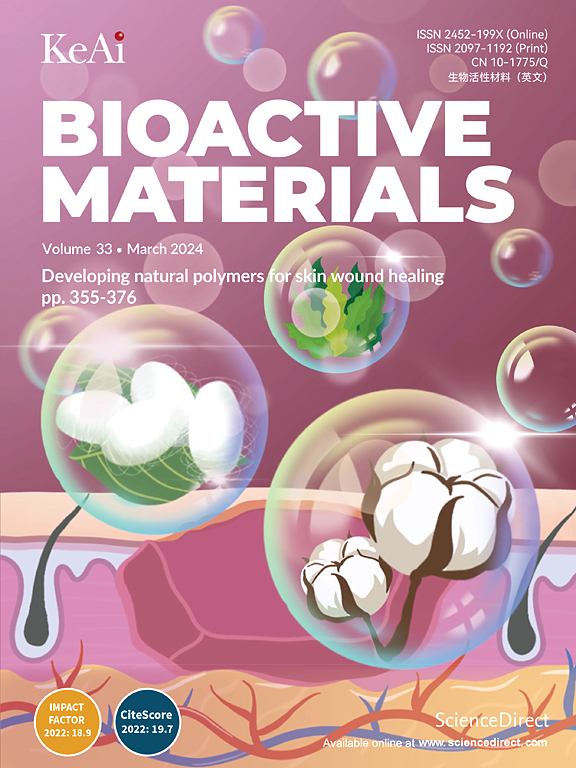Sequential construction of vascularized and mineralized bone organoids using engineered ECM-DNA-CPO-based bionic matrix for efficient bone regeneration
IF 18
1区 医学
Q1 ENGINEERING, BIOMEDICAL
引用次数: 0
Abstract
Given the limitations of allogeneic and artificial bone grafts, bone organoids have attracted extensive attention for their physiological properties that closely resemble natural bone, offering great potential to bone reconstruction for critical-sized bone defects. Although early-stage bone organoids such as osteo-callus organoids and woven bone organoids have been reported, functional bone organoids with vascularization and mineralization are currently unavailable due to the lack of bone-mimicking matrix and dynamic culture systems suitable for the long-term cultivation of mature bone organoids. Herein, a novel engineered bionic matrix hydrogels with multifunctional components and double network structure are developed by incorporating calcium phosphate oligomers (CPO) into a combination of bone-derived decellularized extracellular matrix (ECM) and salmon-derived deoxyribonucleic acid (DNA) via photo-crosslinking and dynamic self-assembly strategies. This kind of bionic matrix hydrogels facilitate recruitment, proliferation, osteogenesis and angiogenesis of bone marrow mesenchymal stromal cells (BMSCs). More importantly, vascularized and mineralized bone organoids are sequentially constructed using BMSCs-loaded engineered bionic matrix hydrogels via in vitro dynamic culture and in vivo heterotopic ossification. Meanwhile, this kind of engineered bionic matrix are capable of achieving efficient bone repair for cranial defect. These findings suggest that engineered bionic matrix hydrogels combined with such dynamic culture system, providing a promising strategy for functional bone organoids construction.

求助全文
约1分钟内获得全文
求助全文
来源期刊

Bioactive Materials
Biochemistry, Genetics and Molecular Biology-Biotechnology
CiteScore
28.00
自引率
6.30%
发文量
436
审稿时长
20 days
期刊介绍:
Bioactive Materials is a peer-reviewed research publication that focuses on advancements in bioactive materials. The journal accepts research papers, reviews, and rapid communications in the field of next-generation biomaterials that interact with cells, tissues, and organs in various living organisms.
The primary goal of Bioactive Materials is to promote the science and engineering of biomaterials that exhibit adaptiveness to the biological environment. These materials are specifically designed to stimulate or direct appropriate cell and tissue responses or regulate interactions with microorganisms.
The journal covers a wide range of bioactive materials, including those that are engineered or designed in terms of their physical form (e.g. particulate, fiber), topology (e.g. porosity, surface roughness), or dimensions (ranging from macro to nano-scales). Contributions are sought from the following categories of bioactive materials:
Bioactive metals and alloys
Bioactive inorganics: ceramics, glasses, and carbon-based materials
Bioactive polymers and gels
Bioactive materials derived from natural sources
Bioactive composites
These materials find applications in human and veterinary medicine, such as implants, tissue engineering scaffolds, cell/drug/gene carriers, as well as imaging and sensing devices.
 求助内容:
求助内容: 应助结果提醒方式:
应助结果提醒方式:


